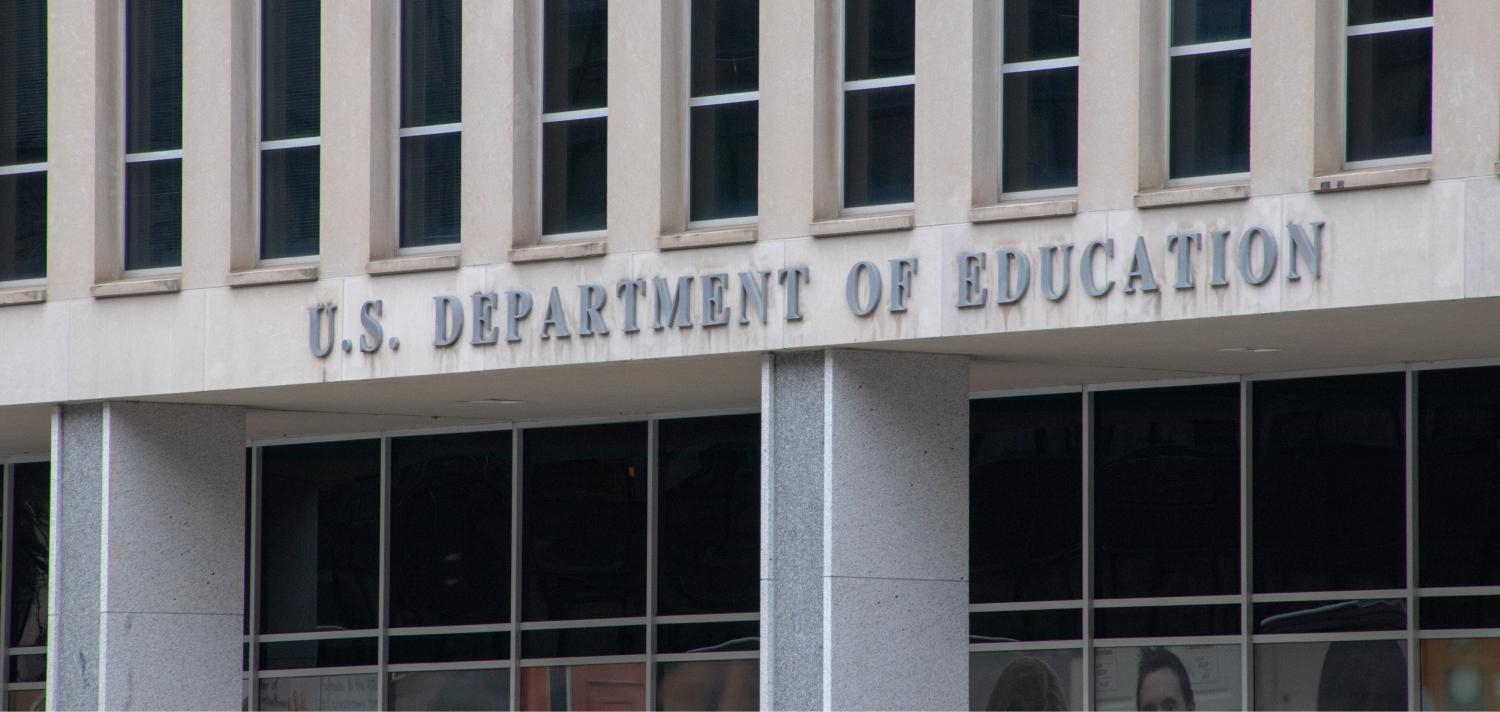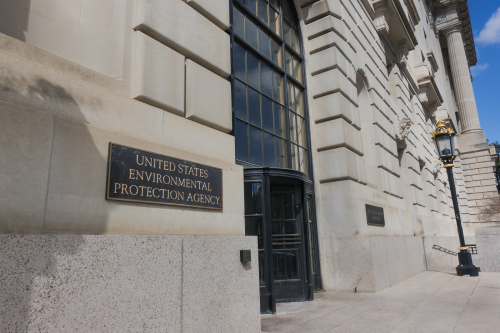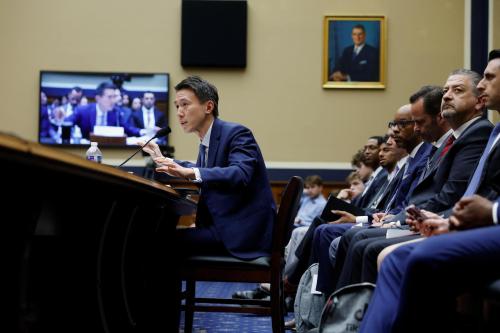Federal student lending is one of the most divisive and important areas of higher education policy. Most prominently, payments on $1.6 trillion in federal loans from over 43.4 million borrowers have been delayed since the COVID-19 pandemic, with the Biden administration extending the pause on payments through at least August 31, 2022. These delays have raised the hopes of millions of borrowers for permanent relief while angering others who feel such relief is an unfair windfall. The Department of Education (ED) has also taken several generally less controversial steps to forgive loans or ease repayment for targeted groups of borrowers. For instance, it used emergency authority for a one-year loosening of key rules for the public service loan forgiveness program, allowing many more borrowers to qualify. The ED also granted loan discharges to borrowers who attended schools that closed, such as the ITT Technical Institute, and gave loan relief to borrowers with a total and permanent disability. Other larger-scale changes are the subject of much speculation but have not been finalized.
These actions are temporary or highly targeted. Absent new legislation, permanent, large-scale changes on most student lending issues such as loan forgiveness will require the ED to issue legally binding rules. But there is a twist. The process by which the ED issues rules is quite different from the standard rulemaking process, where the agency publishes a proposed rule for public comment and then responds to these comments in a final rule. Instead, the ED is obligated to issue the rules through a process known as “negotiated rulemaking” (“reg-neg”). Reg-neg is a process inspired by alternative dispute resolution in which an agency convenes a series of discussions among interested parties to reach consensus on the rule. The agency then proceeds to propose and finalize the rule through the standard rulemaking process.
All agencies are permitted to use reg-neg to issue rules but rarely do so. In 1998, Congress required the ED to use reg-neg for federal student aid program rules. Congress appeared to enact this requirement in response to concern that prior ED rulemakings failed to incorporate feedback from important stakeholders.1 Yet Congress was not very specific. Instead, it justified reg-neg partly by an oblique reference to a desire that the “higher education community would feel their views would be heard.” Reg-neg was described as a way to require the department to provide more extensive and more meaningful outreach to key stakeholders, potentially reducing conflict later in the rulemaking process and speeding the rulemaking process.
The ED conducted this reg-neg process for rulemaking on key student loan issues from June 2021 to December 2021. As detailed below, this reg-neg focused on both high-profile issues like public service loan forgiveness and on somewhat more technocratic issues. This piece examines the virtues and drawbacks of the reg-neg process through the federal student lending example. On the plus side, reg-neg provides a public forum for critical issues to be debated. Voices that might otherwise be sidelined receive a prominent hearing, including those of student borrowers with mounting student debt and poor prospect of repayment. On the minus side, the promise of reg-neg building consensus on controversial issues is largely illusory. As detailed below, consensus on a number of issues was blocked by one committee member who represented for-profit schools. The reg-neg process may still have helped better develop a proposal and build support for it, but the promise of achieving consensus is oversold.
Reg-neg for student lending
Establishing the committee
Under the Higher Education Act, the ED is charged with proposing and finalizing rules for federal student aid programs. Before proposing any rules, the department must conduct the reg-neg process. The first step, which must occur before formation of a negotiated rulemaking committee, is for the department to obtain advice and recommendations from groups ranging from students to lenders to higher education institutions. The department has satisfied this early outreach requirement by publishing a public notice providing a list of the topics that may be included in the reg-neg. For student loan forgiveness, in May 2021 it published a notice announcing its intent to form a negotiated rulemaking committee and outlining topics for possible consideration. The department then held three public hearings in June 2021 at which interested parties could comment on these topics. The upshot of this process is significantly more public engagement at the agenda-setting stage than occurs in conventional negotiated rulemaking—to say nothing of ordinary notice-and-comment rulemaking.
After considering this feedback, the ED in August 2021 published a notice announcing its intent to establish the Affordability and Student Loans Committee (“Committee”). The notice outlined the issues on which the Committee was charged, sought nominations for Committee members, and provided a schedule of Committee meetings. Issues were wide ranging and included: income-driven repayment options; Public Service Loan Forgiveness; options for some borrowers to receive a loan discharge (e.g., if their school closed or misled them); loan discharges for borrowers with total and permanent disability; restrictions on pre-dispute arbitration and required class action waivers; interest capitalization; and Pell Grants for people who are enrolled in prison education programs. This range of issues is significantly broader than a traditional negotiated rulemaking, encompassing many key federal student lending issues.
In September 2021, the ED selected Committee members. Congress required that the department select individuals nominated to represent interests such as the following: “students, legal assistance organizations that represent students, institutions of higher education, State student grant agencies, guaranty agencies, lenders, secondary markets, loan servicers, guaranty agency servicers, and collection agencies.” Because Congress used the phrase “such as,” this list is not binding on the department. Congress also spoke to the nature of the membership, adding that the committee must “include both representatives of such groups from Washington, D.C., and industry participants” and “large and small participants, as well as individuals serving local areas and national markets.”
When soliciting nominations, the ED listed additional and more granular categories beyond those mentioned by the statute. This list appeared tailored to the issues in the negotiated rulemaking. Importantly, one such category was for representatives of for-profit institutions. Other categories focused on specific types of borrowers or educational institutions.
Consistent with its normal practice, the department did not explain or justify its Committee selection decisions, instead simply announcing a list of members. The Committee included members from the ED staff, higher education accrediting agencies, university students, education lenders, university financial aid administrators, individuals with disabilities, and state education officials. Committee discussions were managed by an ED official and facilitators from the Federal Mediation and Conciliation Service, who were intended to be impartial. The Committee received help from advisors, who provided research support and expertise.
The selections created some controversy on the Committee. The Committee was overly tilted toward schools and educational accreditors at the expensive of consumer protection advocates, student borrowers, and state government officials. The Committee itself has the power to add members if it agrees to do so unanimously. Several members moved to add two non-voting members who attended a for-profit institution that closed. All Committee members agreed with one exception: Jessica Barry, the representative of for-profit institutions, withheld consensus.
Committee deliberations reach consensus on some issues
The Committee then began a series of three meetings from October 2021 through December 2021. The Committee worked to reach “consensus” on each of the above issues, which the ED defines as the absence of dissent by any member of the negotiating committee. This threshold is critical, as the department is generally required by statute to propose for public comment all consensus recommendations, setting the rulemaking down that particular path. The possibility of reaching consensus therefore raises the stakes of reg-neg potentially. This has the advantage of making the reg-neg process more worth investing in. It has the disadvantage of potentially making consensus more difficult to achieve.
The Committee did not deliberate in a vacuum. Members of Congress wrote letters to the department during the negotiated rulemaking proceedings. The letters appeared to be an attempt to shape the Committee’s deliberations. For instance, a group of Senators wrote a long letter advocating that the department streamline income-driven repayment plans, expand ability of borrowers whose schools closed to discharge their loans, and expand eligibility for the public service loan forgiveness program. Other members of Congress weighed in as well.
In this case, the Committee reached consensus on proposals for four of the 12 issues. These issues were generally less controversial and included:
- Easing the loan forgiveness process for borrowers with a severe disability
- Streamlining loan discharges for borrowers from a school that falsely certified their loan eligibility
- Expanding Pell Grant eligibility to prison education programs
- Eliminating all instances of interest capitalization not required by statute, including when borrowers enter repayment and when they exit forbearances, among others.
The department will now propose the Committee’s recommendations on these issues for public comment.
One Committee member blocked consensus on three issues
The member representing for-profit schools unilaterally blocked consensus on three additional issues. One such issue was a proposal to expand the ability of borrowers to have their loans discharged in the event their school misled them or otherwise violated certain laws (often termed “borrower defense to repayment”). The for-profit representative, Jessica Barry, argued that institutions should have greater opportunity for review of borrower defense claims to prevent erroneous discharges. She also opposed allowing group consideration of borrower defense claims with similar fact patterns to be the default. A student representative engaged with her on some of these issues. This prompted Barry to respond that “This is the very first couple of days of the negotiations and I know it’s been questioned whether I am here in good faith. I am here in good faith . . ..”
Barry also withheld consensus on providing loan discharges for borrowers whose school closed and reinstating the Obama-era rule banning pre-dispute arbitration agreements for school enrollment agreements on the grounds that arbitration can facilitate faster relief.
Committee came well short of consensus on several hot-button issues
The Committee did not come close to reaching consensus on the several highly charged issues. Twelve of the fifteen Committee members voted against the department’s proposal to create a new income-driven repayment plan. Committee members opposed to the plan generally argued that it was too timid, excluding debt for graduate school programs, covering too few low-income borrowers, and providing too little relief to those covered. One negotiator representing state regulators said that he “expected the department to swing for the fences,” but the plan merely “went for a single.”
The other major issue was how to expand the Public Service Loan Forgiveness program. As noted, the administration has taken significant temporary action in this area. Again, most Committee members believed that the plan was too modest to provide sufficient relief. They argued that the Department should cover additional borrowers such as contractors for eligible nonprofit or governmental employers. The Department countered that this proposal would be too difficult to implement. Advocates also argued that the rules should provide incremental loan forgiveness as borrowers worked toward making 120 eligible payments rather than making public service loan forgiveness an “all-or-nothing” proposition.
Next steps: From negotiated rulemaking to proposal for public comment
The next step is for the ED to propose rules. As noted, the department will propose the Committee’s four consensus recommendations and will develop its own proposals on the non-consensus issues. The master timeline required by statute is critical here. For the rules to take effect by July 2023, they must be finalized by November 2022. Thus, the department must rapidly finalize the rule after the comment period ends. To meet this deadline, the department may opt to finalize the issues that received consensus or consensus absent the for-profit negotiator first and revisit the issues on which the Committee splintered later.
Does reg-neg produce more ideas and information?
A major advantage of reg-neg is that it can generate additional information and policy alternatives by stimulating greater interaction between interested parties with different views. The conventional notice-and-comment process is not very interactive and can be quite adversarial. In many cases, parties file comments near the close of the comment period that speak past each other, leaving the agency to sort out the differences. Parties may also choose to withhold information that does not favor their position but would be useful to the agency.
Reg-neg seeks to avoid these dynamics by giving interested parties an opportunity to reach consensus on key issues. This task is difficult in the best of circumstances. In the ED’s case, the task is even harder because the department typically bundles so many issues into one reg-neg. This certainly saves time and resources, but it can make discussion unwieldy and hurried. The Committee considered twelve issues, and it may have reached consensus on more issues with a smaller and more focused agenda.
A key question remains: did the Committee’s deliberations yield useful ideas and broad support for a path forward on the eight issues where it did not reach consensus? The Committee clearly made significant progress on the four issues discussed above where the for-profit school negotiator was the only hold-out. It appears that the agreement reached by the remaining negotiators will be a serious alternative in the department’s proposed rule. For the issues where the Committee splintered, the answer is very unclear.
The question is difficult to evaluate given the impossibility of observing what information and ideas would have surfaced during the notice and comment period absent a preceding negotiated rulemaking. Moreover, the department publishes only a very sparse summary of the Committee meetings, making it difficult for the public to quickly get a sense of the deliberations. That said, the public can view the reports and policy analyses submitted to the Committee, consensus rule text, and a transcript and full video of the Committee’s deliberations. Moreover, trade press and interested organizations also wrote stories and summaries about the Committee’s work. Committee deliberations were also publicized by members and observers on social media (particularly Twitter). On balance, the Committee’s work was accessible to those who knew where to look.
The flip side of productive negotiations is that reg-neg can reduce the importance of interests who are not represented on the committee. Here, concern that some interests are excluded from the negotiation is somewhat reduced because Congress (somewhat loosely) specified the groups to be included in the negotiated rulemaking. Interestingly, Congress noted the wide array of parties interested in the higher education area (these are listed above) as a reason to mandate negotiated rulemaking in the area, emphasizing that the ED had previously neglected some interest groups.
The problem of excluded interests is greater if the reg-neg committee reaches consensus. In that case, the Committee has gained the support of many key stakeholders and the agency itself. While the agency must still subject the rule to the standard APA notice-and-comment process, in practical terms it may be less open to public feedback, thereby reducing the impact of those who were not included in the regulatory negotiation. Here, that the Committee did not reach consensus on the eight of the 12 issues reduces concern over excluded interests.
Reg-neg uses scarce agency time and resources
A clear negative of reg-neg is agency time and resources. Put simply, reg-neg adds months to an already lengthy and resource-intensive notice-and-comment rulemaking process. The process outlined above for federal student loan forgiveness took over six months without including the preparatory work by department staff prior to issuing the initial public notice.
Congress seemed to recognize the timing problem when requiring the ED to use reg-neg. The statute imposes a strict 360-day deadline for the department to finalize rules implementing new statutory provisions and additional incentives to publish final rules by November 1 of each year. Congress expressed the view that these deadlines could be met despite the additional time for the reg-neg process because the consensus built during reg-neg would speed up the subsequent notice-and-comment process. The available data are very mixed on whether this is true in practice.
Conclusions
The Committee’s experience nicely captures the promise and limits of reg-neg. The Committee lived up to Congress’ aspiration that, with reg-neg, the “higher education community would feel their views would be heard.” The Committee offered a public forum for stakeholders to debate key student lending issues. Stakeholders such as underwater student borrowers who would be at a disadvantage in the notice-and-comment rulemaking process likely had their voices amplified. Yet the Committee did not allow the relevant stakeholders to transcend their differences and build a consensus on the toughest student lending issues. Instead, the Committee either splintered or had consensus blocked by for-profit school representative. The most difficult issues will therefore remain for the department to resolve through the notice-and-comment rulemaking process or perhaps agency action outside the rulemaking process altogether.
The SEC disclaims responsibility for any private publication or statement of any SEC employee or Commissioner. The article expresses the author’s views and does not necessarily reflect those of the Commission or other members of the staff.
The author did not receive any financial support from any firm or person for this article or from any firm or person with a financial or political interest in this article. He is currently not an officer, director, or board member of any organization with an interest in this article.
-
Footnotes
- The 1992 Act, (Pub. L. No. 102-325), S.Rept 102-204.






